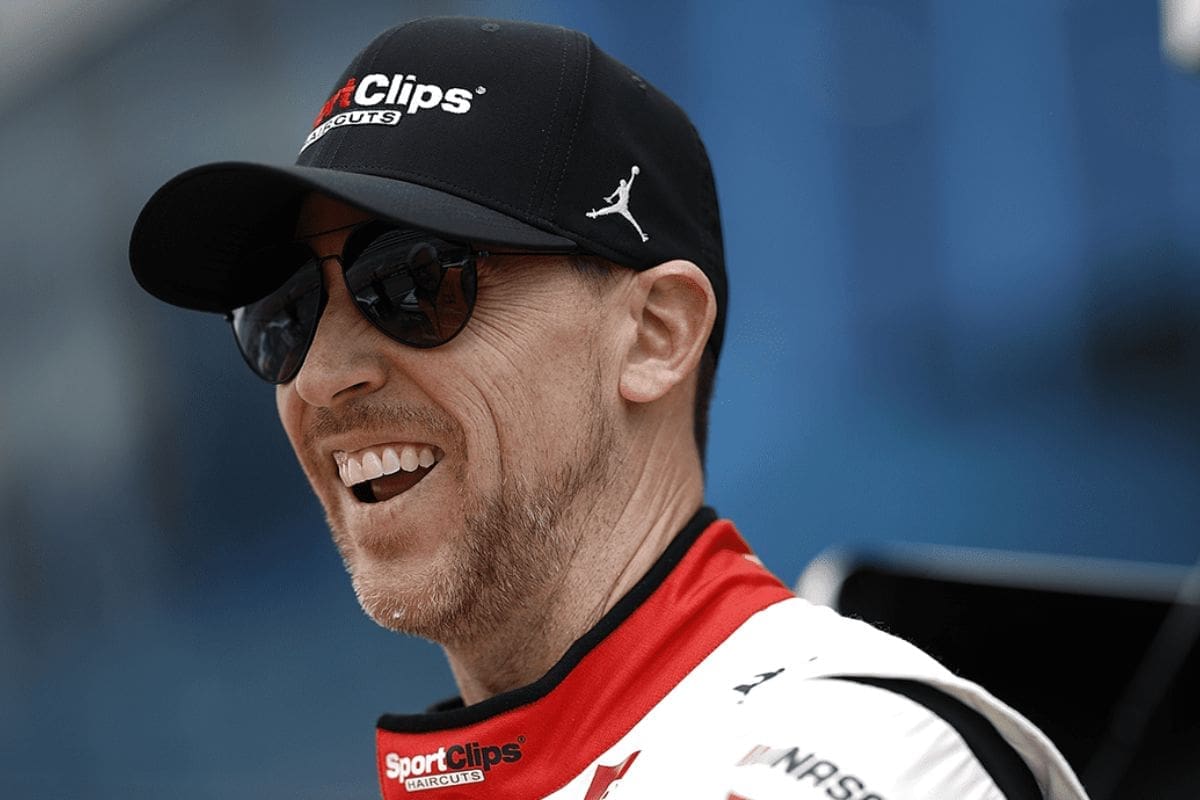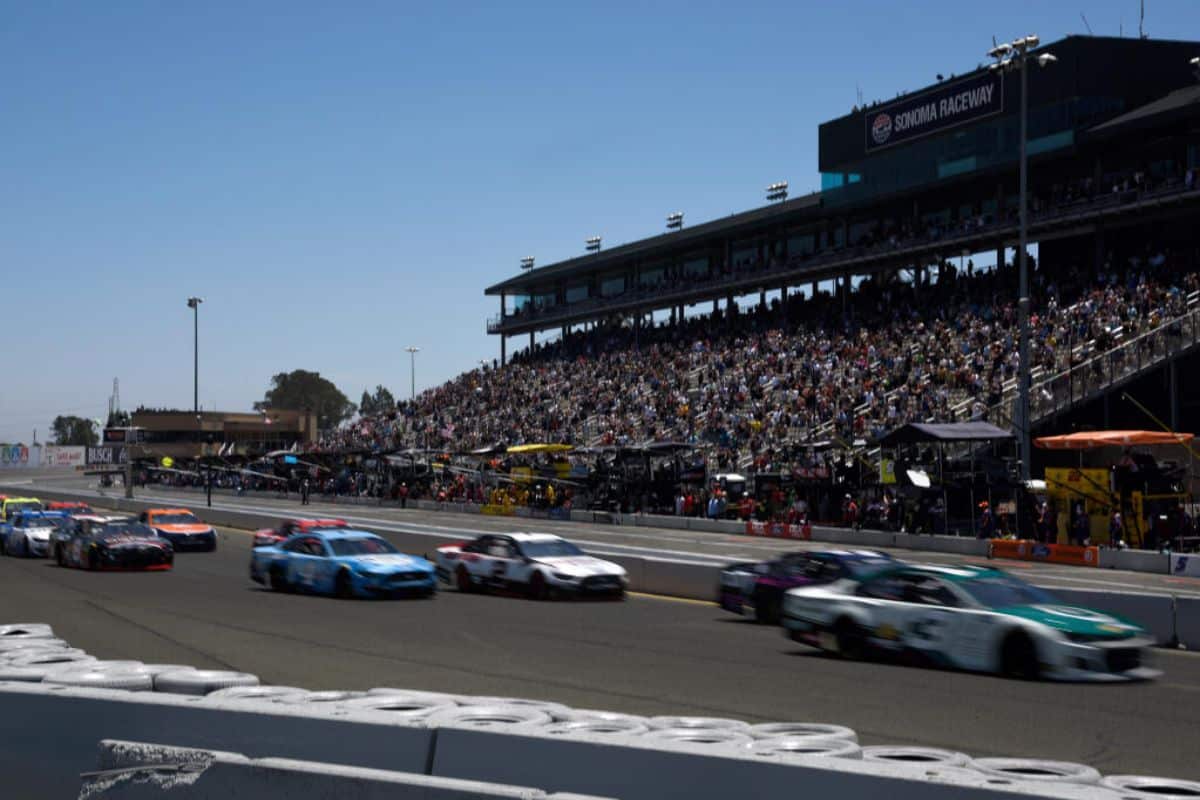Denny Hamlin Echoes Dale Jr’s Call: Denny Hamlin, reinforcing Dale Earnhardt Jr.‘s plea, advocates for Goodyear to initiate a pivotal tire experiment in Iowa, aiming to reduce NASCAR’s continuous tire reliability concerns. Hamlin’s support highlights the broader racing community’s clamor for tires that offer superior durability and consistency. This call for innovation emphasizes the necessity for technological advancements in tire manufacturing and spotlights the unique challenges presented by short-track racing. As Hamlin and Earnhardt Jr. unite their voices, the implications for NASCAR’s future tire performance and racing integrity become a critical point of viewing.
Key Highlights
- Denny Hamlin supports Dale Jr.’s call for improved tire durability and consistency.
- Both advocate for Goodyear to conduct rigorous testing under race conditions.
- Hamlin emphasizes the importance of tire innovation for safety and performance.
- The driving community demands Goodyear to enhance tire performance for short-tracks.
- Collaborative efforts between Goodyear, teams, and drivers are essential for better tire development.
Denny Hamlin’s Iowa Misfortunes
Despite showing promise early on, Denny Hamlin’s race at Iowa’s Cup Series debut was plagued by misfortunes beyond his control, including corded tires and a collision with Kyle Larson. Starting from a respectable P12, Hamlin, the seasoned driver from Joe Gibbs Racing, found himself hindered by mechanical and situational adversities that ultimately dictated his P24 finish.
The initial stage saw Hamlin struggling with corded tires, an issue that greatly impaired his performance. Corded tires, indicative of severe wear, not only compromise grip but also heighten the risk of punctures and other exhaustig failures. For a driver of Hamlin’s caliber, such unforeseen complications can be particularly disheartening, especially when competing on a new track where every lap counts for data collection and strategy refinement. The impact of the tire degradation was immediate and palpable, causing a detrimental loss of pace and necessitating unscheduled pit stops that shuffled Hamlin back in the running order.
Compounding the tire woes was an unfortunate crash with Kyle Larson during the final segment. In NASCAR, where split-second decisions often dictate outcomes, such incidents are sometimes unavoidable. The collision not only cost Hamlin valuable track positions but also may have inflicted damage on the #11 car, further compromising its competitiveness.
These setbacks, though frustrating, highlight the unpredictable nature of motorsports. Despite meticulous preparation and veteran expertise, Hamlin’s experience at Iowa showcased the myriad variables that can influence race outcomes. His P24 finish, a stark contrast to his earlier success at North Wilkesboro, serves as a poignant reminder of the relentless challenges inherent in the sport.

Hamlin’s Insights and Observations
In his post-race analysis on the ‘Actions Detrimental’ podcast, Denny Hamlin provided a thorough breakdown of the key factors affecting his performance and the broader implications for NASCAR’s strategic direction.
Hamlin began by acknowledging Ryan Blaney’s groundbreaking win as Iowa’s inaugural champion in the premier division. He highlighted the significance of this achievement, noting it as a turning point for both Blaney’s career and the sport’s expansion efforts in new markets.
Hamlin then shifted focus to NBC’s return as NASCAR’s broadcast partner for the remainder of the season. He emphasized the network’s deep-rooted connection with NASCAR and its potential to enrich the sport’s visibility and fan engagement. The seasoned driver expressed optimism about NBC’s ability to deliver high-quality coverage, which he believes is essential for maintaining and growing the fanbase.
In dissecting his own performance, Hamlin was forthright about the challenges he faced. He pointed to a combination of car setup issues and strategic miscalculations that impeded his race. He stressed the importance of continual adaptation and learning, particularly considering the evolving track conditions and competitive dynamics. Hamlin’s insights reflect a detailed understanding of the intricacies of racing and the necessity for teams to remain agile and innovative.
“Our problems were different than the Xfinity cars. They had a heat problem. So just a lot of heat, so they were blistering quite bad… There’s no way for the heat to escape the tires. You’re on a surface. It is pretty flat so the tire is always making contact with the asphalt. So it’s just creating a ton of heat and a lot of friction. And then in the Cup cars, it was more of a shoulder issue – air pressure, cambers, things like that. Ours was definitely a different problem than Xfinity. So I wasn’t too concerned going into our race…” – Denny
Moreover, Hamlin’s observations extended to the broader state of NASCAR. He emphasized the need for the sport to welcome experimentation and innovation, both concerning race formats and technological advancements. His call for strategic evolution aligns with a forward-looking vision that seeks to balance tradition with modernity, ensuring NASCAR’s relevance in an ever-changing sports landscape.
Goodyear Tire Issues and Dale Jr.’s Advocacy
Frequently, the persistent issues with Goodyear tires on short tracks have become a focal point of scrutiny within the NASCAR community, prompting Dale Earnhardt Jr. to vocally advocate for significant improvements. The recurring challenges with tire performance have not only affected race outcomes but also raised safety concerns, leading prominent figures like Earnhardt Jr. to demand a reevaluation of Goodyear’s approach.
Dale Earnhardt Jr., a respected voice in the NASCAR domain, has consistently highlighted the need for Goodyear to innovate and experiment, especially on short tracks where tire performance is critical. His advocacy centers around the belief that Goodyear’s current offerings are insufficient to meet the demands of high-intensity racing, necessitating a more rigorous testing and development regime.
Denny Hamlin, aligning himself with Earnhardt Jr.’s stance, has also emphasized the critical nature of resolving these tire issues. By echoing these concerns, Hamlin emphasizes the broader consensus within the driving community: the need for Goodyear to conduct more extensive experiments, particularly in venues like Iowa, where short track dynamics are prevalent.
Detailed Analysis of Tire Performance Issues
Given the thorough and complicated nature of tire performance issues, a detailed analysis reveals critical areas where Goodyear’s current offerings fall short in meeting the rigorous demands of high-intensity short-track racing. The deployment of the same ‘prime’ tire setups from the All-Star race to the Iowa track highlights a significant oversight in adaptability and customization required for diverse track conditions.
“I think on the left. Yes. I think the left-side tire still has some room for the compound itself to be softer. That would allow more tire falloff because the times still, flatlined really for all 90 laps. They didn’t gain speed or lose speed. They just stayed the same. It certainly could cause some tires to wear out if you put a softer left-side. And as the racetrack starts to wear out as well, it should allow you to run a softer compound.” -denny
One of the most striking concerns is the unnatural tire fall-off observed during races, especially highlighted by Denny Hamlin’s victory at Bristol’s concrete return. Despite a record-breaking 54 lead changes, the dynamics of tire degradation detracted from a balanced competition, suggesting an inherent mismatch between tire composition and track surface. This phenomenon was mirrored in the Iowa race, where 17 lead changes over 350 circuits still could not disguise the persistent issues attributed to Goodyear’s tire performance.
Furthermore, the domination of Joey Logano in the North Wilkesboro All-Star race, leading all but one lap, further emphasizes the problematic nature of current tire selections. The lack of tire wear variability resulted in a single-lane short-track racing scenario, decreasing the competitive aspect of the event. This uniformity in performance is antithetical to the principles of short-track racing, where tire management is crucial to driver strategy and race outcome.
Future Prospects and Reflect the backdrop of persistent tire performance issues, the future of Goodyear’s involvement in NASCAR hinges on their ability to innovate and adapt to the unique demands of short-track racing. The Iowa Corn 350 highlighted significant challenges, with 10 incidents occurring due to tire failures, half of which were attributed to Goodyear radials. This highlights the urgent need for a refined approach to tire design and testing, particularly for short-track circuits that exert unique stresses on the tires.
Denny Hamlin’s observations during his podcast emphasize a mixed assessment of the situation. While tire failures were incontrollable during practice sessions, adjustments by the teams appeared to mitigate some of the issues during the race itself.
“I thought it was better than what it was in practice. I mean, we saw it was around lap 20 or 25 in practice, guys were blowing out tires. And I do think that teams made adjustments as well, to help with that.” -denny
This suggests that while the teams have a role to play in tire performance, the responsibility remains on Goodyear to develop more reliable tire compounds and constructions.

News in Brief: Denny Hamlin Echoes Dale Jr’s Call
The advocacy for Goodyear’s experimental efforts in Iowa, championed by Denny Hamlin and Dale Earnhardt Jr., highlights the critical necessity for improved tire reliability in NASCAR. Addressing tire performance issues through innovation and testing is essential for the advancement of short-track racing.
Collaborative efforts between drivers and manufacturers can lead to significant improvements in tire durability and consistency, ultimately contributing to the sport’s safety and competitiveness. This initiative represents a significant step towards ensuring top performance standards in NASCAR.
ALSO READ: Denny Hamlin Admits Defeat After Heartbreaking Iowa Crash
